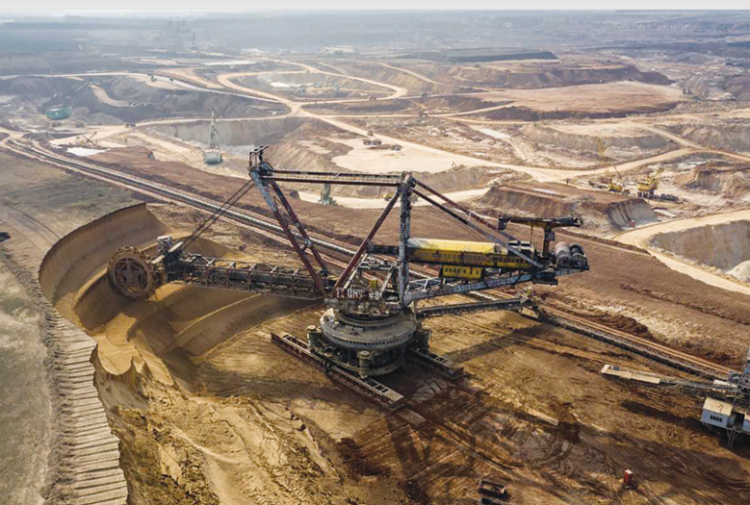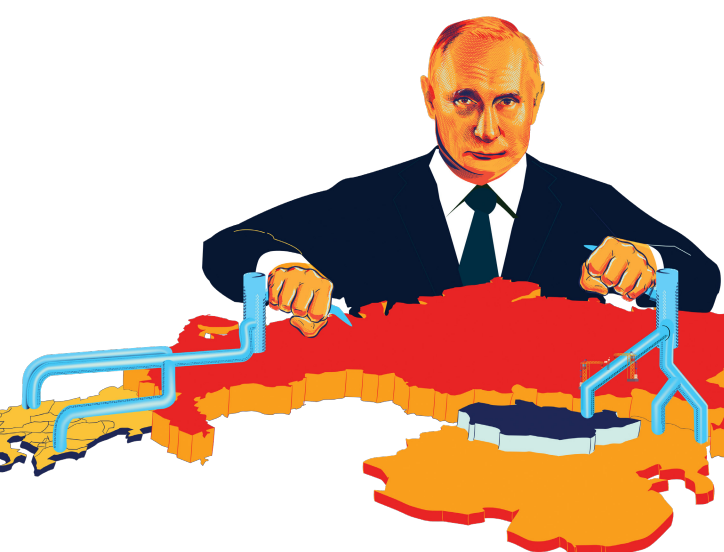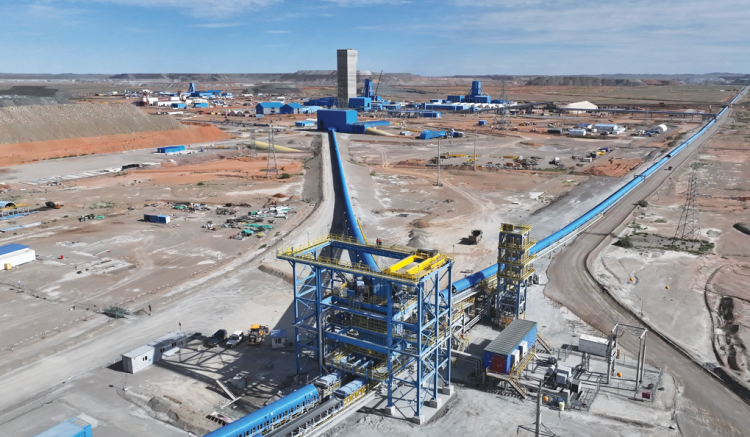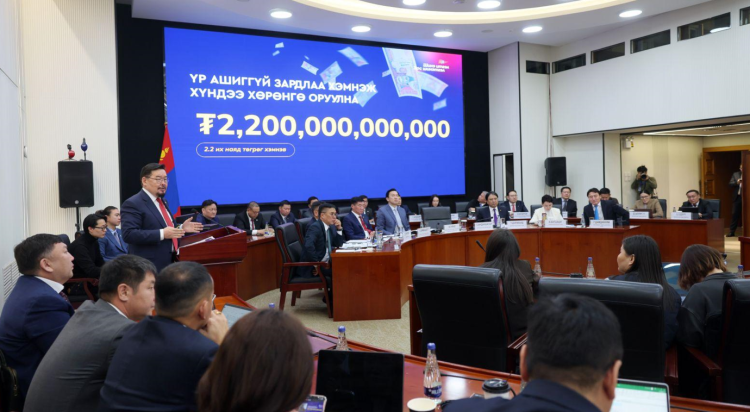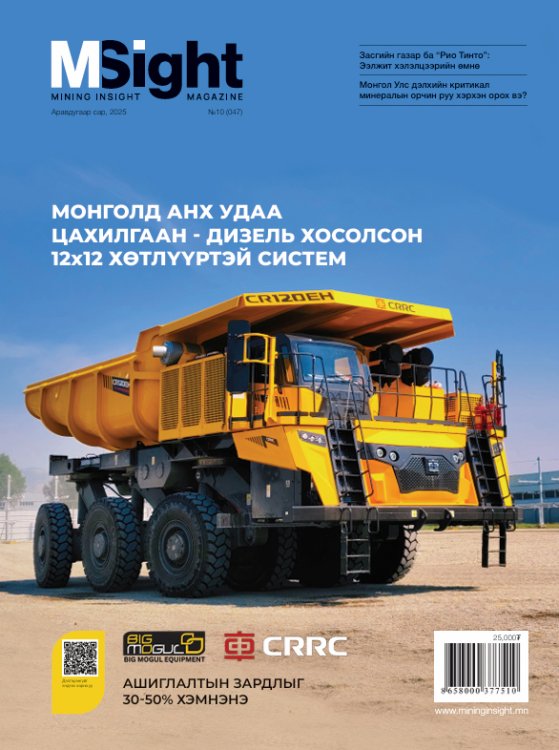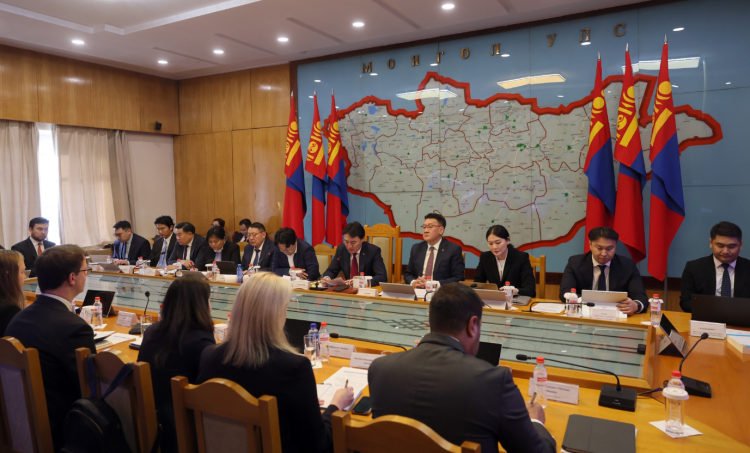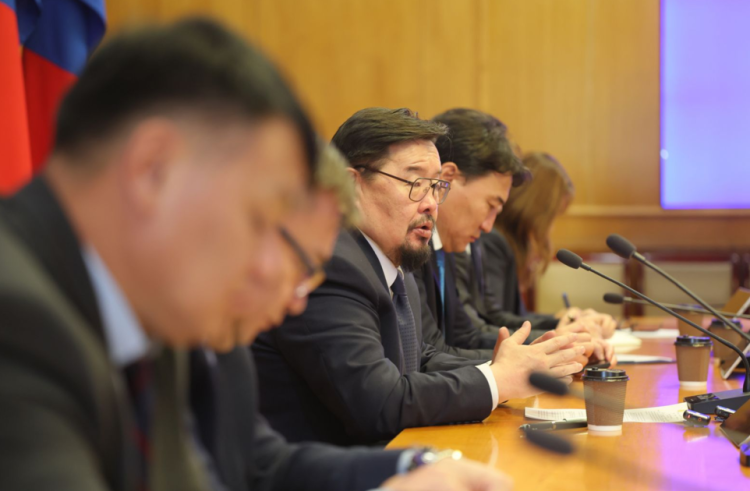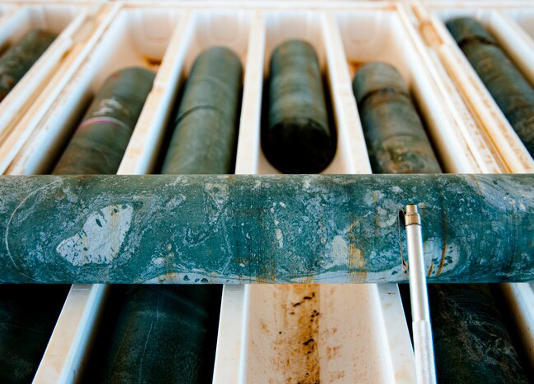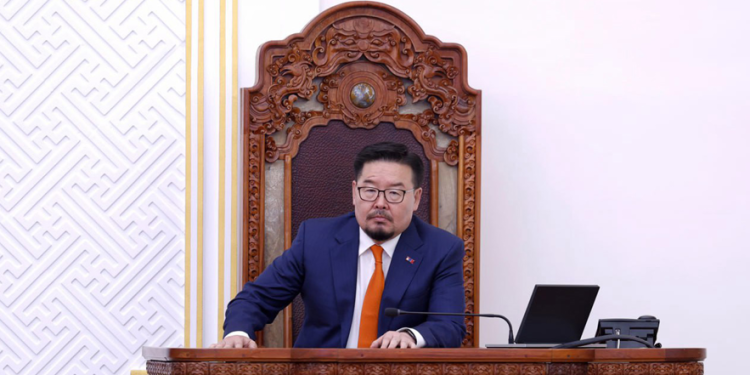In the 21st century - an era symbolizing peace - Ukraine has unexpectedly found itself under the shadow of aggression and at the center of global attention. Situated at the frontier between Russia and Europe, this country’s mineral wealth, particularly its reserves of rare metals, has raised questions about whether these resources are a driving force behind armed conflict and geopolitical rivalry. Analysts and observers widely conclude that Ukraine’s mineral resources play a crucial role not only in the country’s sovereignty but also in ensuring Europe’s energy independence and in the ongoing technological dominance race between the United States and China. Ukraine today possesses abundant reserves of critical minerals and rare earth elements, highly sought after by the world’s major economies. What makes the situation even more intriguing is that a significant portion of these resources lies within territories currently occupied by Russia.
WHAT METALS IS UKRAINE RICH IN?
…At a United Nations Economic Commission for Europe conference in 2021, Ukraine’s Deputy Minister of Environmental Protection and Natural Resources, Svitlana Grynchuk, reported that although Ukraine makes up only 0.4% of the Earth’s surface, it holds around 5% of the world’s mineral resources. That same year marked a significant period of reform for Ukraine’s mineral resources sector. The country began actively promoting its critical mineral potential internationally, signing strategic partnership agreements, and accelerating online tenders for licenses covering rare earth elements and metal deposits. In that year alone, over 100 companies from North America and Europe submitted proposals. However, just a few months later, war broke out between Russia and Ukraine (February 24, 2022). Ukraine’s national reserve currently registers around 20,000 deposits and occurrences of 117 types of minerals. Of these, 8761 deposits of 95 types of minerals have been classified as having industrial significance. According to the Geological Service, the country’s key mineral resources include iron ore, lithium, rare earth elements, graphite, beryllium, titanium, uranium, gallium, and manganese. Before the war, over 2000 enterprises were active in mining, processing, and beneficiation across 147 metal and 2908 nonmetallic deposits. The reason for saying “before” is that Ukraine’s major mineral reserves and key mining industries are located in the southeastern region, where armed conflict has now continued for a third year. Historically, the Donbas region, situated within this conflict zone, was the industrial and agricultural heartland of Ukraine since Soviet times. Rich in coal, iron ore, and metals, this area once provided most of the country’s heavy industry and energy production. Ten years ago, when Russia annexed Crimea and Donetsk by military force, Ukraine lost all projects in its secondlargest iron ore basin the Kerch Basin which included seven iron smelting and coke plants. Prior to the war, mining and metallurgy made up 10% of Ukraine’s GDP and 33% of its exports. Now, with Russia blockading Ukraine’s Black Sea ports, the country’s export routes have narrowed, and iron ore exports have dropped by 60% compared to prewar levels. Key markets remain China, Poland, and Slovakia. Ukraine’s 6.5 billion tonnes of iron ore reserves spread across 60 deposits account for 3% of global reserves. The largest, the Kryvyi Rih Basin, has been mined for 145 years. Among its leading producers is “ArcelorMittal Kryvyi Rih,” a company backed by Indian investment. In terms of gallium extraction, Ukraine ranked second after China in 2024, though information regarding the country’s reserves and deposits remains scarce. In general, under Ukrainian legislation, data on certain metals is classified as state secret. According to estimates by the U.S. Geological Survey, Ukraine’s gallium reserves amount to 8.4 million tonnes. Ukraine possesses the largest titanium reserves in Europe and ranks among the world’s top ten countries. A total of 78 deposits are currently being studied. The country has exploited around 10% of its total reserves and is actively mining six deposits. In 2024, UMCC, which supplies 4% of the global titanium market, was privatized for USD 95 million. While Mexico, China, and the Czech Republic had been Ukraine’s main titanium buyers, last year the market structure shifted, with exports sent to Turkey, Egypt, the United States, and Poland. Export revenues have fallen tenfold compared to pre war levels. The United States has classified titanium as one of 50 critical minerals essential to its economy and national security, relying entirely on imports for its supply. Globally, China and Russia together account for 70% of titanium production. Ukraine, one of the world’s top five countries for graphite reserves, holds 18 million tonnes. In 2021, graphite was added to the country’s list of strategic minerals. Around 100 deposits have been identified in four regions. Ukraine is the sixth largest graphite producer in the world. In 1934, mining began at the Zavallivske deposit, 70% of which was acquired by the Australian company “Volt Resources” four years ago, though operations were suspended in 2024 due to the war. One of the country’s best deposits, the Burtynsky deposit, with reserves of 6.5 million tonnes, is currently mined by Turkey’s Onur Group. Ukraine exports graphite to Germany, France, Belgium, the United Kingdom, Switzerland, Japan, South Korea, and the United States. The European Union depends on imports for 98% of its graphite consumption, while the U.S. relies on imports for 80%. Ukraine also holds a competitive position in global uranium production, ranking first in Europe in terms of reserves. There are 17 registered uranium deposits in the country, three of which are being mined, supplying 30% of the domestic nuclear power plants’ demand. Previously, Ukraine sent its uranium ore to Russia for processing and received fuel in return. It now collaborates with the U.S. company Westinghouse and Canada’s Cameco to meet its nuclear fuel needs. In 2023, Ukraine signed an agreement with Cameco for uranium ore processing in Canada. Kazakhstan, Canada, Namibia, and Australian companies currently operate in Ukraine’s uranium sector. Ukraine has announced plans to increase uranium extraction to fully meet domestic demand by 2027, with the intention of supplying European markets thereafter. According to a report by the National Academy of Sciences of Ukraine, there are untapped reserves of 500,000 tonnes. The government has stated that approximately 10% of the world’s lithium reserves, covering an area of about 820 square kilometers, remain completely unexploited in the country.
Roman Opimakh, former Head of the State Geological Service, explained that “there is no modern assessment of Ukraine’s rare earth element reserves, and current estimates are still based on old Sovietera studies.” Most of the reserves are concentrated in seven major deposits. Among them, the Novopoltavske deposit, which underwent extensive exploration and was discovered in 1970, would require USD 300 million in investment to be brought into economic circulation. However, it remains unclear which side currently controls the deposit amid ongoing conflict. Three months before the war began, Australia’s Critical Metals company acquired licenses for two major lithium deposits, one of which, the Shevchenkivske field with 13.8 million tonnes of reserves, has since fallen under Russian control. Meanwhile, the Dobro group of deposits remains under Ukrainian control, with UkrLithiumMining being the only company preparing to launch commercial lithium mining operations there in 2028. Another major lithium deposit, Krutaya Balka, is reported to have likely come under Russian control according to recent information. Western researchers argue that Ukraine’s mineral resources, ranking second only to China in rare earth element reserves, must be safeguarded. Ukraine’s Perzhanske deposit has confirmed reserves of 15,300 tonnes of beryllium and is considered one of the few rare earth complexes in the world with high beryllium content. If developed comprehensively, it could position Ukraine as a major source of rare metals. The domestic company “Perzhanska Ore,” which holds the license for this deposit, has estimated that over USD 100 million in investment would be required to begin commercial production. Currently, no beryllium extraction is taking place in Ukraine. Ukraine has confirmed manganese reserves of 2.4 billion tonnes, primarily concentrated in the Nikopol Basin. Seven mines are presently operational. In 2021, the country ranked eighth globally in manganese extraction, exporting mainly to the United States, the Czech Republic, Poland, and Russia. Over the past two years, Ukraine’s manganese exports have completely halted, with exports resuming in January 2025, when 44,903 tonnes of metal were shipped solely to the United States. It has been reported that by the end of 2024, the country’s largest producers, the Pokrov and Marhanets mining and processing plants, ceased operations. According to a 2025 study by YouControl, companies holding special permits for mineral extraction in Ukraine include investors from 51 countries, among them multinational corporations from Canada, the United Kingdom, Australia, and India. As of March 25, the regions of Luhansk, Donetsk, Zaporizhzhia, and Kherson were under Russian control. Ukraine traditionally harvests essential food products such as barley, corn, and sunflower oil from its eastern and southeastern regions, which also account for 80% of its oil, natural gas, coal extraction, and reserves. Last year, the Russian Federation approved a list of 31 types of minerals found in the Ukrainian territories it occupies, including metals such as lithium, tantalum, cesium, and strontium. According to President Volodymyr Zelensky, approximately 20% of Ukraine’s mineral resources are now under Russian control. During the presentation of the “Victory Plan,” he emphasized that Ukraine’s critical minerals could strengthen Europe’s security and help free it from dependence on Russian and Chinese raw materials.
EUROPE’S HOPE
A year ago, when the European Union adopted the Critical Raw Materials Act (CRMA), it updated its list of essential metals to include 34 types of minerals. According to the Ministry of Economy, reserves of 22 of these minerals are found within Ukrainian territory. In July 2021, the two parties signed the “Strategic Partnership Agreement on Critical Raw Materials and Rare Elements,” aimed at developing 100 projects focused on 10 key minerals. The European Union also announced its intention to cooperate in fully utilizing and developing Ukraine’s mineral resources. This agreement further reinforces European interest in Ukraine’s mining sector. In 2020, the European Commission’s “Hydrogen and Clean Energy Transition Strategy Document” identified Ukraine as a key partner in the green energy transition. Ukraine has long been a candidate country with aspirations to join the European Union. In today’s sensitive and critical times, European Commission President Ursula von der Leyen’s remarks have raised hopes among Ukrainians. Speaking at a high level summit of Kyiv’s allies marking the third anniversary of the war, she stated, “If Ukraine continues its reforms rapidly and meticulously, it could potentially become a member of the European Union within the next five years.” In response to the U.S. President Donald Trump’s trade and tax policies, China has repeatedly tightened and restricted the supply of rare earth elements and certain metals. Researchers have warned that such decisions could have a direct impact on Europe’s national security for instance, the demand for gallium alone is projected to increase 17fold by 2050.
U.S DEMANDS REPONSE
Out of the 50 minerals listed by the USGS as critical raw materials in the United States, 16 are being extracted in Ukraine by 39 companies with special licenses. At the beginning of the year, the Ukrainian government announced that it was in talks with Western countries, including the United States, the United Kingdom, France, and Italy, to partner on critical minerals. Shortly after, at Washington’s suggestion, President V. Zelenskyi declined to sign an agreement that would grant rights to utilize Ukraine’s USD 500 billion worth of strategic raw materials, citing the lack of “clear security guarantees” in the document during the Munich Security Conference. According to the US Department of Defense, USD 183 billion has been spent, including costs for replenishing Ukraine’s defense resources. Nevertheless, President Zelenskyi emphasized in an interview with the press that the proposal for the rights to use Ukraine’s critical raw materials remains open to the United States. The United States is heavily dependent on the import of rare earth elements and metals. For example, China accounts for about 94% of the world’s gallium reserves and is the leader in graphite reserves. These two metals are at the top of the US critical raw materials list, and the country fully imports them to meet domestic demand. Should China reduce its supply of gallium by 30%, the US domestic production would shrink by USD 602 billion, with GDP falling by 2.1%, according to estimates from the US Geological Survey.
ACTUAL CONDITIONS
“This is a political ‘game.’ The very little information about the actual reserves is outdated. Ukraine can promise anything it wants to America. But we do not know exactly what minerals are in its subsoil,” stated Grace Baskaran, director of the U.S. Center for Strategic and International Studies. In reality, many experts agree that Ukraine’s mineral reserves and geological data are outdated, based on Sovietera exploration surveys. After the dissolution of the USSR, Ukraine’s geological exploration did not progress significantly due to financial shortages. Just earlier this year, the Ukrainian government reorganized the state company ‘Nadra Ukraine’ and started efforts to modernize its geological exploration system. “Ukraine has the potential for mining and metal production, but its future remains very uncertain,” said Jack Bedder, founder of the “Project Blue” analytical company. The development of mining projects is awaiting the end of the war. In the unstable geopolitical conditions in Eastern Europe, the exploitation of strategic minerals poses high risks, including possible military conflict and political sanctions, beyond economic significance. “Burnt land and soil in Ukraine, but what is missing are rare earth elements. Interestingly, not only U.S. President D. Trump but many people seem to be confident that the country has vast mineral resources. This is nonsense,” wrote Javier Blas, an energy and commodities analyst at Bloomberg. “...The Trump administration offered Ukraine to exploit rare earth metals, which went far beyond mining, encompassing oil, natural gas, ports, and other infrastructure, according to the draft proposal from February 17,” published by “The Daily Telegraph”. “The conditions proposed by the U.S. express an economic colonization of Ukraine, representing an impossible burden of compensation,” the article concluded.
SIMILAR TO MONGOLIA...
The issue of Ukraine might seem distant when considering the entire continent, but there are many similarities with our country’s situation. One of the main pillars of the economy is mining. Although the country has abundant mineral resources, the geological data is outdated and based on Sovietera surveys. Ukraine aims to raise awareness of its valuable mineral and rare metal reserves internationally, viewing it as an opportunity to attract foreign investments and multinational corporations. However, the high cost of energy poses a challenge for developing the mining industry. While Ukraine has access to the Black Sea, Russian control over the ports has effectively rendered it “landlocked” in terms of maritime access. Despite this, Ukraine’s geopolitical significance is enhanced by its dependence on the import of essential metals, high demand for them, and its proximity to the large European market. The European Union is offering Ukraine a mutually beneficial partnership to develop its mineral resources based on the “winwin” principle, while the U.S. expects a “return” in terms of military and defense support. In any case, both the European Union’s goal to transition to green energy by 2050 and the United States’ interest in reducing dependence on China for rare earth elements align with the potential to tap into Ukraine’s untapped and underexplored subsoil resources. Of course, the primary priority is to end the war.
Mining Insight Magazine, March 2025




